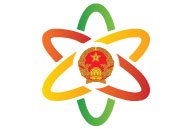
News
Information collection will decide the results of compliance assessment
Summary
Updated on : 29-08-2018

|
|
| Deputy Director General Hoang Viet Cuong stated at the conference. Photo: Q.H |
It is one of the contents directed by the Deputy Director General Hoang Viet Cuong stated at the online conference on improving the mechanism of compliance assessment of enterprises engaged in import and export activities that took place on 7th August at the GDVC’s headquarters.
Reporting on the actual compliance assessment and application of enterprises’ results, the Deputy Director of Risk Management Department (under the GDVC) Bui Thai Quang, emphasized that the compliance assessment for enterprises was conducted by the Customs sectors in three phases: Phase 1 (from 2006 to 15th January 2014); Phase 2 (from 15th January 2014 to 31st March 2015), and phase 3 (from 1st April 2015 until now).
For example, in phase 3, the enterprises which are included as subject to compliance assessment (implemented similar to the phase 2) are enterprises which have not been involved in imports and exports; enterprises which were dissolved, bankrupted, stopped operations; enterprises engaged in import and export activities (from 2 years go).
According to the statistics, there were 95,377 enterprises subject to compliance assessment. All enterprises which have been dissolved, bankrupted, stopped operations and closed tax codes are included into subjects of examination on conditions for declaration registration.
As a result, the compliance assessment and application of results of compliance assessment are a part of the implementation of the risk management application in particular, and the State management on Customs in general. Although the assessment has just been deployed, it has shown how important a role it plays in modern Customs management.
This is the legal framework that has created independent legal corridors in terms of specialized operation and thoroughly connected Customs operation; established itself quickly and step by step improved with the development and deployment of risk management application. The assessment has step by step been methodically implemented and increasingly enhanced the quality and application scope in Customs management.
Besides, the compliance assessment of enterprises, the application has met requirements for the implementation of Customs law in phases; met the deployment of policies, creating efficiency and synchronicity in Customs management.
This assessment has promptly met requirements of Customs modernization and reform, transferred the method of Customs management from transaction control to supply chain management, basing on the compliance of enterprises.
Besides achievements, Deputy Director of Risk Management Department, Bui Thai Quang mentioned 7 shortcomings and limitations, including: the method of classification of enterprises’ compliance; criteria on compliance assessment; assessment mechanism; information for compliance assessment; limitations on information technology system; facilitating policies and management measures.
|
|
| The Customs agency has implemented 2 mechanisms, including the compliance assessment and enterprises ranking. Photo: Q.H |
The conference received 11 comments from provincial and municipal Customs departments, and departments under the General Department of Vietnam Customs on mechanism of information collection, system development, and coordination in information exchange. At the same time, unifying the implementation of two mechanisms: Compliance assessment (from 3 levels to 4 levels) and enterprise ranking (from 7 to 9 rank) .
Specifically, the mechanism of compliance assessment for transparency and facilitation of enterprises is stipulated in the Customs law, so that enterprises shall know their compliance status. On the other hand, the mechanism of enterprise ranking is a specialized Customs tool and derived from requirements on specialized operation and widely applied in Customs operation.
At the conference, Deputy Director of Vietnam Customs Hoang Viet Cuong appreciated the achievements during 12 years of risk management application and the conducting of 3 phases of enterprise compliance assessment.
The Deputy Director General emphasized that the urgent issue is information exchange and the method of information collection and analysis. The transfer from transaction control in the declaration into the management of compliance assessment, the way of collecting and analyzing information are decisive factors for the legal compliance assessment of enterprises as well as risk management application.
The Deputy Director General requested units collect information from many sources in accordance with current regulations. First of all, the Risk Management Department needs to urgently coordinate with the General Department of Taxation to immediately collect and analyze information in the Finance sector as the key task. In addition, the mechanism for information assessment should clarify responsibilities from the General Department level to the Branch level.
Source: Customs News
Most Recent News
| Title | Category | Created On |
|---|---|---|
| VIDEO: Ngành Hải quan thực hiện 3 nhiệm vụ quan trọng hàng đầu chuyển đổi số | News | 2024-10-01 06:06:55 |
| Vốn đầu tư trực tiếp nước ngoài giải ngân cao nhất trong 5 năm qua | News | 2024-07-16 16:06:43 |
| Thị trường Bắc Âu bổ sung 9 quy định đối với hạt điều nhập khẩu | News | 2024-06-28 14:37:14 |
| Singapore tăng thuế dịch vụ hàng hóa (GST) từ 8% lên 9% | News | 2024-05-10 16:09:44 |
| Hoa Kỳ khởi xướng điều tra chống bán phá giá đĩa giấy nhập khẩu từ Việt Nam | News | 2024-05-10 16:02:56 |
Search All News
|
A Quick Intro |
Search Trade Information
|
|
|
|
|
|
|
|
|
|
|
|
|
|
Feature Information
|
|
|
|
|
|
|
|
|
|
|
Information & Articles
|
|
|
|
|
|
|
|
|
|
|
|
Contact Us! If you cannot find what you require in this website please feel free to contact us. Click here to send us a message >>>
|

